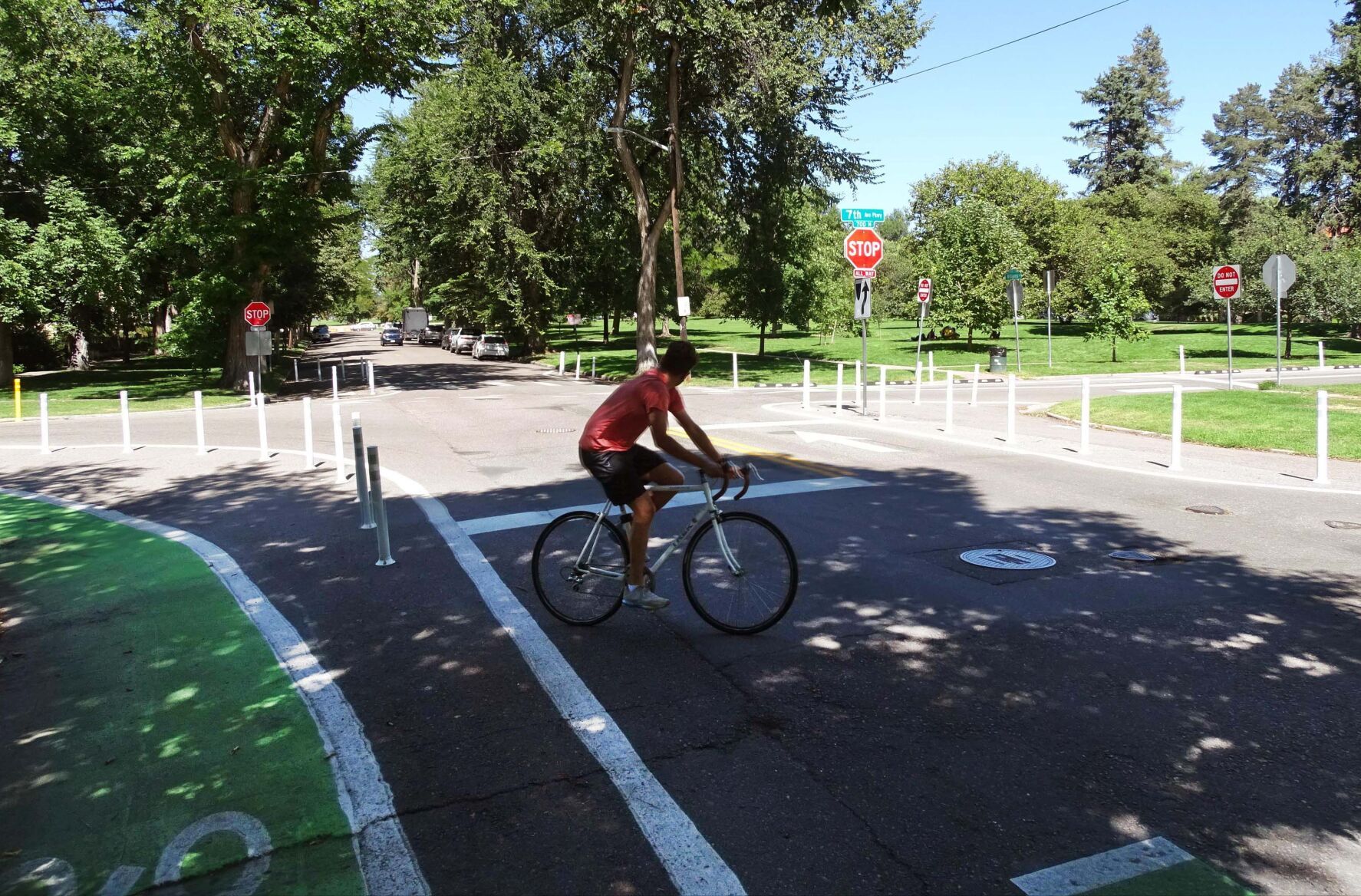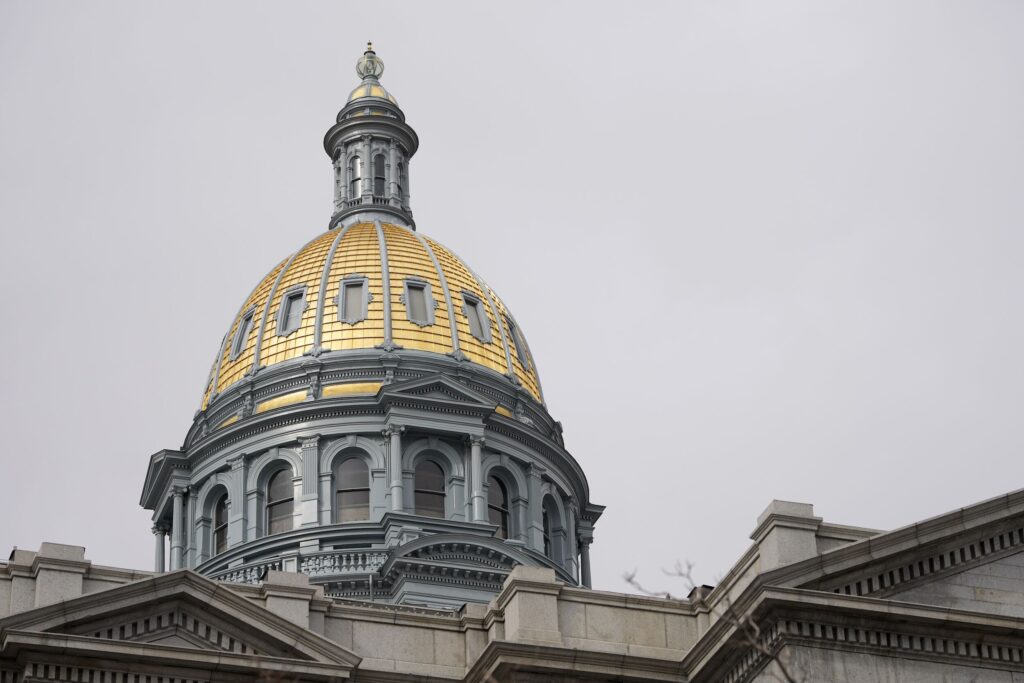On boulders and bollards – and a “vibrant” Denver | SONDERMANN

St. Louis has its signature Arch. San Francisco is known for its iconic bridge. Think of Seattle and picture the Space Needle. New York imagery centers on the Statue of Liberty, at least until our President sends it back as no longer applicable.
Now bring it home and ask yourself what defines Denver these days. Besides the mountain backdrop and the ever-present fragrance of ganja, the city’s two most notable markers are the boulders that fill our street medians and the bollards that seemingly adorn every other street corner.
If you regard either as a thing of beauty, then you have a very different definition of what constitutes art, even of the urban variety.
Neither the boulders nor the bollards can be missed. But we will start with the large rocks that at least have some nexus to Colorado’s rugged mountains.
Drive down most any Denver thoroughfare, along with plenty of ordinary streets, and one can’t help but take note of the collection of very large rocks, methodically and voluminously placed to keep homeless individuals or groups from setting up camp.
Of course, homelessness is both a societal shortcoming and a human tragedy. Mayor Mike Johnston’s administration has made notable progress in moving homeless people off the street and into housing. The mass encampments, which virtually took over entire blocks, are largely a thing of the past.
Though the record is far more mixed in keeping such persons in housing and treatment, far too many reappear on the streets weeks or months later to reenter this cruel lifestyle. Moreover, despite new housing options and treatment programs, and all the money dedicated to them, Denver’s homeless numbers continue to rise.
On the micro level, some individuals are undoubtedly being helped and even saved. From the macro viewpoint, the number of homeless people grows year after year. The question must be asked whether Denver, however noble its intentions and deep its wallet, has become a homeless magnet.
The boulders that have replaced grass, planters, or even concrete along many streets serve as a form of crowd control. They might provide some benefit to the nearby merchant or homeowner, though most often they only serve to scatter homeless folks elsewhere.
And more than once, I have witnessed limber individuals, as if playing a game of Twister, wedge themselves among the giant stones for a few hours of shuteye.
Now to the cousin eyesore to these monstrous boulders, bollard is a dictionary term for a short, vertical post most often used as a form of traffic control. Denver seems to have cornered the market on them. If there is a worldwide shortage of such unattractive mini-pillars, our fair city will be set.
The question must be asked: What genius decided that these traffic phalluses in unspeakable volume should become Denver’s latest symbol?
A simple inquiry to Denver’s Department of Transportation and Infrastructure (DOTI to abbreviate that mouthful) as to how many bollards there are within Denver city limits went unanswered.
Anyone wish to hazard a guess? The answer is clearly in the multiple thousands if not tens of thousands.
No one argues with the idea of traffic safety. But this can’t be the best or only solution. Moreover, when deployed in extreme numbers, they actually create havoc.
For one example, check out the corner of 7th and Williams just below Cheesman Park. Per a count made by a former City Council member who lives nearby, 87 bollards grace this one intersection. Confusion is the result of this gross excess as motorists, bicyclists and pedestrians alike are utterly befuddled as to where they are supposed to go.
When DOTI created this mess three years ago, they called it a “temporary” solution. Their meaning of “temporary” must reflect the cosmic definition in that all of us are temporary beings.
During that construction, my wife approached one of the intallers to ask why he was placing the bollards closer together than what was indicated by guidelines. He replied by asking her to keep quiet about it as he was being paid by the bollard.
More recently, such ugly accumulations are springing up in every part of the city. No neighborhood is immune or granted inoculation. The next victims of DOTI’s unresponsiveness and arrogant attachment to a one-size-fits-all theory of “traffic calming” are all those living north and south of Alameda between Lincoln Street and University Boulevard. Good luck to them.
Meanwhile, Mayor Johnston has mined the dictionary for his favorite word, “vibrant.” It is his go-to description of the city he leads. At his behest and bearing his brand, a $950 million Vibrant Denver bond proposal will go before Denver voters this fall.
In the name of accuracy, perhaps he should tell it like it is. Vibrancy is a great aspiration. Though under the circumstances, and with a surplus of boulders and bollards as evidence, most Denver residents would gladly settle for mediocre or average or just good enough.
Eric Sondermann is a Colorado-based independent political commentator. He writes regularly for Colorado Politics and the Gazette newspapers. Reach him at EWS@EricSondermann.com; follow him at @EricSondermann.












